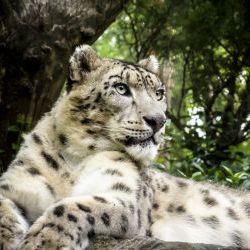India Develops Unique Solution For Snow Leopard Conservation

A new study suggests that a much better strategy to ensure the protection of snow leopards is to involve local communities and protect their livelihoods. Snow leopards are the alpine ecosystem’s apex predators. This means conserving the species is critical for all other species in the ecosystem such as Asiatic Ibex and Musk Deer. Unfortunately, the population of snow leopards is declining as the number of prey population falls, poachers hunt the species for their skin and locals engage in revenge killings in retaliation for loss of livestock.
Educating local communities
In order for a conservation programme to succeed it is very important to ensure that local communities understand the importance of conserving a species and including them in the process. The latest research efforts are now focused on both socio-economic and scientific perspectives in terms of the approach to snow leopard conservation. In India, the snow leopard is a protected species though there are still no details regarding a long-term conservation strategy that includes locals.
Compensating for the loss of livestock
The study does conclude that the people living in the snow leopard habitat of Ladakh would stop the practice of revenge killings if they were compensated for the loss of their livestock. The researchers engaged in both direct observation as well as camera traps and a species distribution model in order to identify potential habitable regions. The model accounts for the presence of snow leopards as well as the absence of data and uses a number of parameters such a elevation, water and prey to determine the potential area.
Mitigating overlap
According to the model, elevation is the most important factor followed by terrain ruggedness and land cover. It was found that in the Ladakh region which is part of the Indian state of Jammu & Kashmir, about 12 per cent of the area was very suitable for snow leopards. The researchers also looked at data on livestock killings as well as tourism data that they obtained from the Snow Leopard Conservancy India Trust and Panthera Foundation with the habitable site. They found an overlap of over 60 per cent and in that part of Ladakh they began to work with the local community to establish a homestay tourism programme.
Homestay tourism
The Trust now supports more than 200 homestays in 40 plus villages. 90 per cent of the income earned from these homestays goes to local families directly. The rest of the money is used for conservation activities such as planting trees, maintaining cultural sites as well as management of garbage. The income generated by the homestays goes a long way towards offsetting the income that is lost from snow leopards preying on livestock.
Retaliatory killings have all but stopped
A spokesperson for the Snow Leopard Conservancy Trust says the most important stakeholders when it comes to snow leopard conservation are the local communities. Prior to the establishment of the homestay initiative, many farmers engaged in retaliatory killings of snow leopards after the loss of their livestock. Since the programme has taken off, these revenge killings have all but stopped in the project areas.



